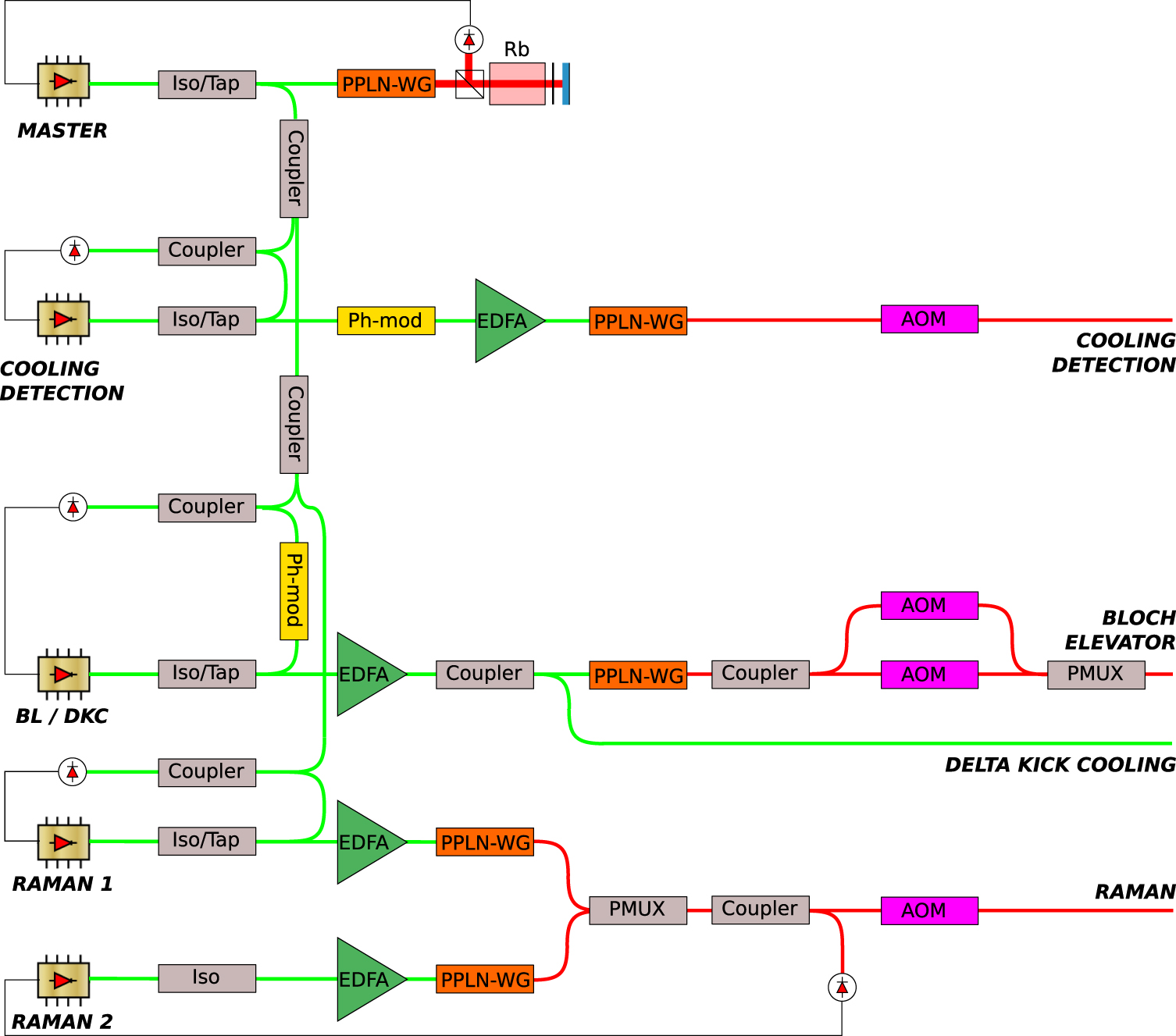EPJ D Highlight - Laser-based prototype probes cold atom dynamics
- Details
- Published on 16 December 2019

A new prototype design doubles the frequencies of widely used telecommunications lasers to study the dynamics of cold atoms while in space.
By tracking the motions of cold atom clouds, astronomers can learn much about the physical processes which play out in the depths of space. To make these measurements, researchers currently use instruments named ‘cold atom inertial sensors’ which, so far, have largely been operated inside the lab. In new work published in EPJ D, a team of physicists at Muquans and LNE-SYRTE (the French national metrology laboratory for time, frequency and gravimetry) present an innovative prototype for a new industrial laser system. Their design paves the way for the development of cold atom inertial sensors in space.
The insights gathered by the team could offer significant improvements in the accuracy of tests of fundamental physics, as well as assessments of the Earth’s gravitational field. Studies in the past have made significant strides towards mobile laser systems for cold atom inertial sensing which are more compact, but these have not yet widely proven suitable for measurements in space. In their study, the researchers’ updated laser system was implemented onto a ground-based atomic sensor at LNE-SYRTE. This enabled them to prove that their prototype was ready to carry out real experiments measuring the subtle variations in the Earth’s gravitational field using matter wave interferometry techniques. Their work was carried out in collaboration with Sodern in the frame of a more general study led by the European Space Agency (ESA), whose objective was to assess and improve the maturity of cold atom technologies.
The design involves industrial lasers which are typically used for telecommunications; with their frequencies doubled. This setup benefited from a wide availability of components, as well as extensive previous research into the properties of the lasers. Through further testing in space-like environments, the team hopes that their system could soon allow researchers to probe various aspects of the physical environment of space in unprecedented levels of detail.
R. Caldani, S. Merlet, F.P. Dos Santos, G. Stern, A. Martin, B. Desruelle, V. Ménoret (2019) A prototype industrial laser system for cold atom inertial sensing in space, European Physical Journal D 73: 248, DOI: 10.1140/epjd/e2019-100360-2





